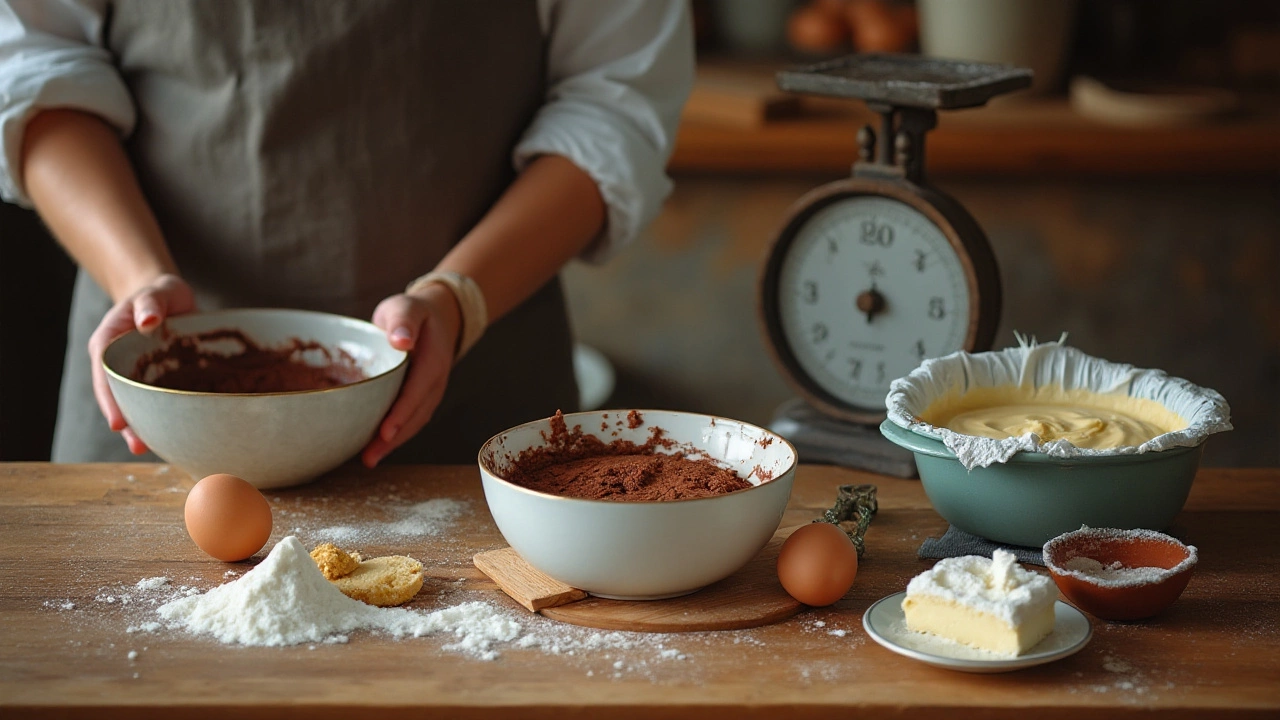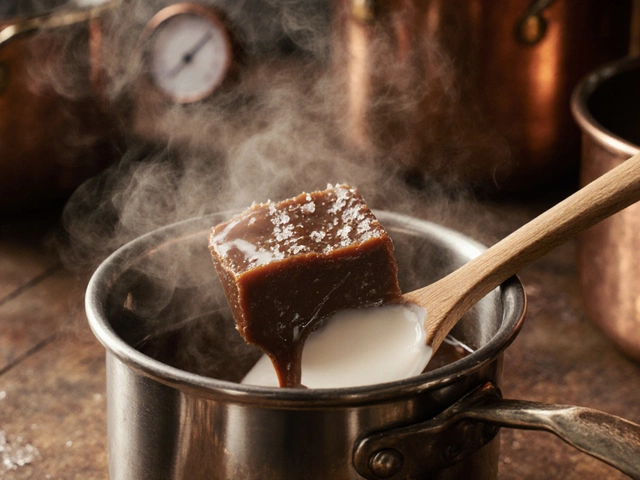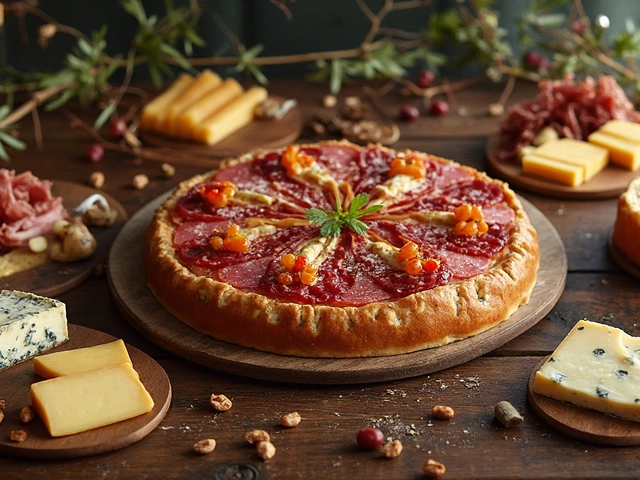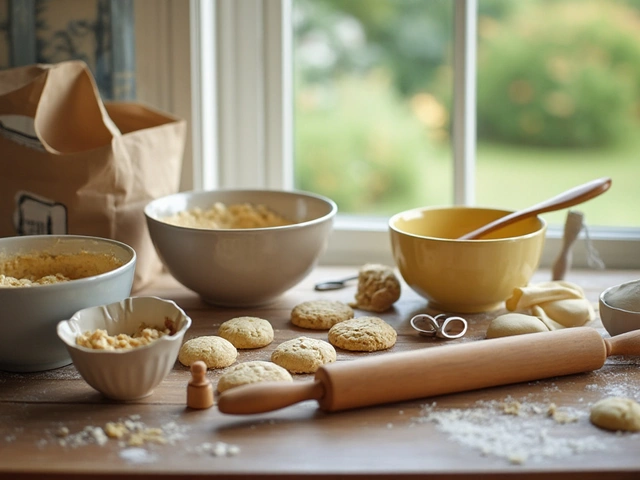Many of us might find ourselves in a delightful dilemma when standing between a luscious brownie and a slice of cake. While both are deliciously sweet, these two desserts are worlds apart in their composition and character. Let’s dive into what makes brownies and cakes distinctly their own, from the ingredients that form their base to the textures that tantalize our taste buds.
Baking enthusiasts and dessert lovers alike will find joy in exploring these differences. Understanding what sets them apart not only helps in appreciating the craft but also improves your own baking skills. Whether you're aiming for a gooey brownie or a fluffy cake, knowing these nuances will elevate your baking game to the next level.
- Origin and History
- Key Ingredients
- Texture and Taste
- Baking Techniques
- Popular Variations
- Tips for Perfecting Each
Origin and History
The journey of both brownies and cakes through time is a fascinating tale of culinary evolution and cultural significance. The brownie, believed to have originated in the United States in the late 19th century, is often attributed to an accidental creation. Legend has it that a chef at the Palmer House Hotel in Chicago made a new dessert for a socialite’s event, resulting in the creamy and dense treat we now adore. The earliest printed brownie recipe appeared in the 1897 Sears Roebuck catalog, sparking rounds of baking experiments across American kitchens.
On the other hand, cakes have a lineage stretching back to ancient times, deeply rooted in celebrations. Initially, cakes were more bread-like, sweetened with honey, incorporating nuts and dried fruits. The evolution into what we now recognize as cake began in Europe around the middle ages, where the invention of ovens and the discovery of refined sugar transformed them into the sweet, airy concoctions we crave today. The Industrial Revolution brought about key innovations in food production, allowing ingredients like baking powder to be widely used, which led to the softer cakes we are familiar with.
"No matter where it comes from, the sweet aroma of baking lets us know we are home." - Clara Barton, food historian.
The differences in the rise and baking method between these two desserts underscore how changes in culinary techniques influence what lands on our plates. The brownie, known for its chewy texture, took a path to fame through its association with boxed mixes and modern adaptations, such as the addition of different flavors and mix-ins like nuts and chocolate chips. Meanwhile, cakes continued to evolve with layered structures, extravagant decorations, and were at the heart of elaborate ceremonies, from weddings to birthdays.
By understanding the origin stories of these sweet treats, one can appreciate the role each has played beyond mere confection. The brownie’s creation speaks to the era of experimentation, where mishaps in the kitchen could lead to new traditions. Cakes, however, have stood the test of time as symbols of indulgence and joy, adapting continuously to the tastes and styles of different eras. Today, both remain staples, each with its unique origin story contributing to their enduring appeal in the world of desserts.
Key Ingredients
When we delve into the world of brownies and cakes, their foundation lies with a handful of basic ingredients. Yet, the magic happens in the proportions, leading to entirely different dessert personalities. Both typically start with some common staples—flour, sugar, eggs, and butter or oil—but it's the quantities and additional elements that craft their unique identities. In brownies, you’ll often find a higher amount of chocolate or cocoa powder compared to flour, lending them their characteristic density and rich flavor. This ratio provides a fudgy texture that's not quite like any other dessert.
Cakes, on the other hand, usually focus on creating a balance to encourage rise and fluffiness. Here, sugar and eggs often play starring roles in the structure, with the sugar contributing not only to sweetness but also to a light, tender crumb. Eggs, with their protein structure, help cakes to rise and maintain that signature lightness that makes each bite airy and satisfying. The leavening agents like baking powder or baking soda are key players in cakes, providing the needed lift. Interestingly, the role of fat can vary significantly; butter adds a rich flavor, while oil can create an exceptionally moist texture.
Sometimes, the contrast between these two confections can be subtle, influenced by just a pinch of baking powder or a touch more butter. For instance, brownies might incorporate a mix of cocoa powder and melted chocolate to achieve depth and complexity, while cakes could use vanilla extract to add an aromatic layer. Acclaimed baker David Lebovitz once said,
"The essence of a good baked treat lies in the harmony of its ingredients—they must sing in concert to create something memorable."His insight captures the art of picking the right amount of every component to let them shine collectively.
Let's not forget the influence of regional variations as well. In some cultures, you'll find brownies with added nuts or spices, enhancing their dense structure with textured flavors. Conversely, traditional cakes might feature fruit purées or extracts that bring freshness and vibrancy. In modern kitchens, variations can include ingredients like cream cheese in frosting for cakes or sea salt sprinkled over brownies to offset sweetness beautifully. These innovations not only satisfy evolving tastes but also celebrate the adaptability of these basic recipes across different culinary traditions.
The ultimate distinction in the key ingredients is how they respond to heat and how they interact to create complex flavors and textures. For instance, sugar caramelizes faster in brownies due to the higher fat content, forming a crunchy crust on top while keeping the center soft. In cakes, the even distribution of flour and leavening agents ensures an even rise, providing a consistent and fluffy texture. Therefore, understanding these elemental differences allows bakers to tweak recipes creatively to achieve desired results. Don't hesitate to experiment; baking is as much science as it is art.
To experiment further, one can compare the impact of using different types of flour, like cake flour versus all-purpose in maintaining lightness in cakes or adding variety to the dense nature of brownies. Consider substituting some flour with almond meal for a gluten-free approach, or try swapping butter for applesauce to adjust the fat content without losing moisture. Knowing how ingredients react and interact offers endless possibilities for customization while keeping the essence of these beloved desserts intact. Feel free to innovate and personalize, turning each bake into a canvas for your culinary creativity.
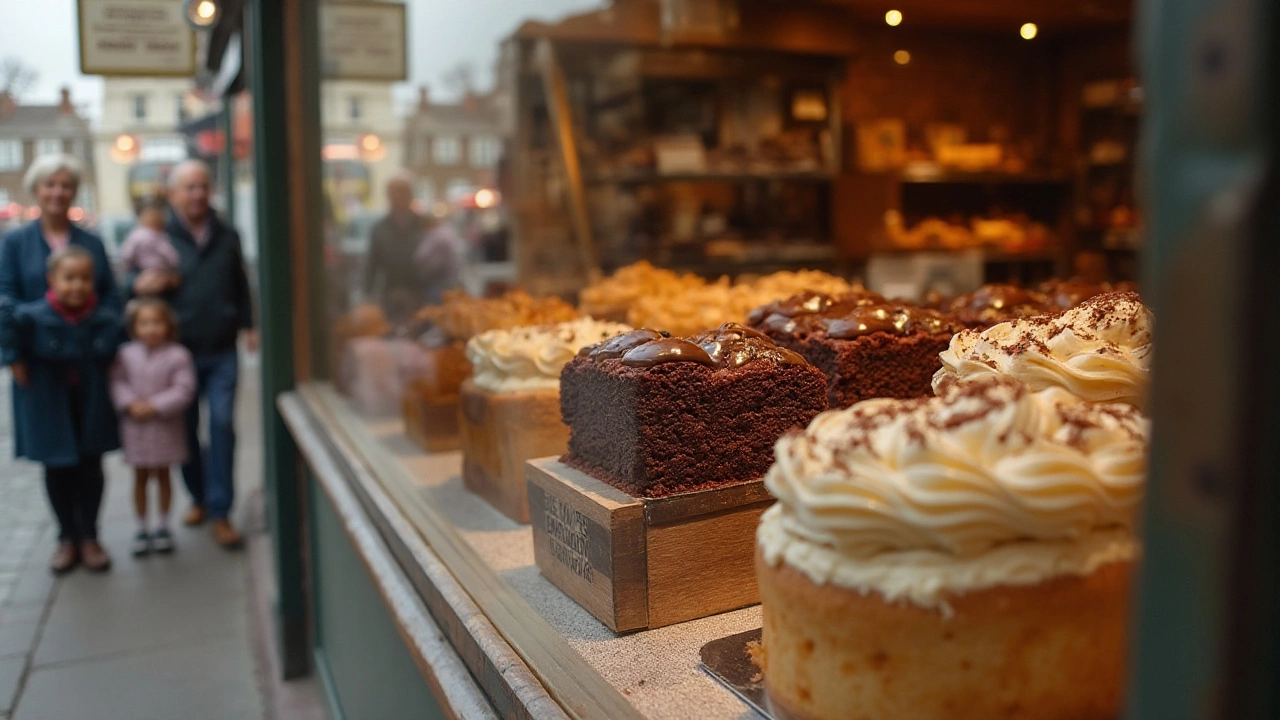
Texture and Taste
The allure of a perfectly baked dessert often lies in its texture and taste—the elements that linger long after the last bite. When it comes to brownies, the texture is unmistakably dense and chewy, almost fudgy in its appeal. This is largely because brownies are made with less flour and more fat, typically butter or oil, which contributes to their rich, compact structure. The batter itself is thick, making it ideal for those who relish a deeply indulgent treat without the fluffiness of cake. This dense texture allows brownies to hold their own when infused with flavors such as nuts or chocolate chips, each bite a harmonious explosion of taste and texture.
On the flip side, cakes boast a light, airy texture that is the result of whipping air into the batter. This is achieved through the creaming method, where butter and sugar are beaten together until fluffy, before adding eggs and dry ingredients. Cakes often use baking powder or baking soda as leavening agents, creating a delicate crumb that's perfect for layering and icing. The taste of cake can range from buttery vanilla bases to vibrant, fruity infusions depending on ingredients and flavorings added. Noted chef and dessert enthusiast, Julia Child once quipped, "A party without cake is just a meeting."
This highlights the integral role cakes play in celebration due to their ability to pair with diverse flavors while maintaining a delightful mouthfeel.
But how do these textures relate to taste? In brownies, the sugar content is usually higher, offering a more intense sweetness which pairs perfectly with the cocoa or chocolate used in the mix. This, combined with a throat-coating butteriness, often results in a rich depth that feels indulgent. Brownies typically have a slightly bitter cocoa edge, which rounds off the sweetness quite elegantly. On the other hand, cakes offer versatility in both taste and finish. The lighter crumb enables a balance that accommodates a wide variety of frostings, fillings, and decorations, from sweet buttercreams to tangy creams or fresh fruits. This makes the cake an adaptable dessert, capable of pleasing diverse palates from simple pound cakes to intricate confections.
An interesting fact that adds a layer of complexity to this comparison is the way in which each dessert holds moisture. Brownies, by design, are less prone to drying out quickly because of their higher density and fat content, often getting even better a day after baking as they become more cohesive in texture. Cakes, with their airy nature, need to be wrapped well or coated with icing to remain moist and fresh. This distinction makes brownies a go-to for portable snacking while cakes continue to reign as centerpiece desserts. The balance of texture and taste nuances between these two beloved desserts truly showcases the artful combination of science and creativity in baking.
Baking Techniques
The art of baking brownies and cakes involves a unique set of techniques that can significantly influence the outcome of your desserts. When you're preparing to create a batch of rich and dense brownies, the method is somewhat different from that of a light and airy cake. The brownie batter is thicker, typically starting with melted butter or oil mixed with cocoa powder, sugar, and just a small amount of flour to keep them fudgy. Attention to mixing is crucial; for brownies, overmixing can result in too much air being incorporated, leading to a more cake-like texture, which we strive to avoid for this dessert.
"The secret to a good brownie is less flour and more chocolate," says renowned pastry chef Alice Medrich, speaking to the dense and chewy texture enthusiasts adore.
Shifting to cakes, the technique leans towards creating an aerated batter. The creaming method is often employed, where butter and sugar are beaten together until pale and fluffy, creating a foundation for a tender crumb. The gradual addition of eggs is crucial; each egg should be fully incorporated before adding the next to ensure structural integrity. Incorporating ingredients often ends with alternating wet and dry, to maintain the batter's lightness. Sifting flour and other dry ingredients is a good practice in cake making, preventing lumps and promoting even distribution for a homogeneous rise. Baking times and temperatures differ as well, with cakes often requiring a gentler heat so they cook through without drying out.
Moreover, the baking vessels themselves can make a difference. Brownies thrive in sturdiness, so a metal pan often does the trick, providing even heat distribution to form that iconic crackly top. Cakes, on the other hand, benefit from lighter-weight pans, which offer a slower heat-up, allowing the batter to rise before setting structure.
Common Pitfalls
While baking, novices and experts alike can stumble upon common pitfalls. For brownies, ensure not to overbake; the center should appear slightly underbaked, cooking continues after removing from the oven. When it comes to cakes, inconsistent temperatures can cause uneven rising or, in the dreaded case, sinking. An oven thermometer can help monitor precise temperatures, ensuring the perfect rise. For both, it’s important to let them cool gradually, preventing sudden temperature shifts that could alter texture. In this sweet world of baking, precision and patience yield the most delicious results.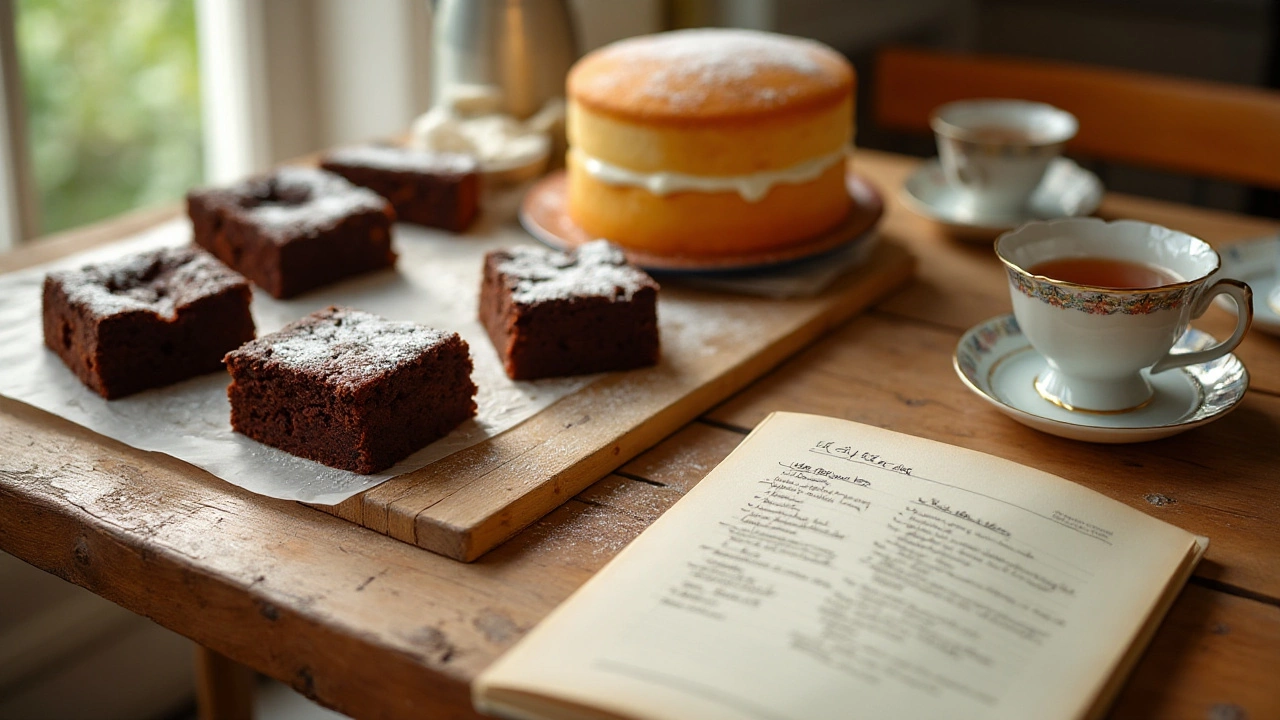
Popular Variations
Brownies and cakes offer a playground for creativity in the kitchen. As many passionate bakers would agree, the beauty of these desserts lies in their adaptability and the infinite flavor combinations they can support. Starting with brownies, there are several well-loved variations to tickle your taste buds. One of the most celebrated is the fudgy brownie, adored for its dense, moist interior and decadent chocolatey taste. Achieving this involves using a high ratio of butter and chocolate to flour, ensuring every bite is a rich indulgence. On the other hand, chewy brownies, which have developed their own loyal following, often incorporate brown sugar and an extra egg, adding a delightful texture that some find irresistible.
Meanwhile, the world of cakes is just as expansive and exciting. From the classic vanilla sponge to a layered opera cake, each presents its own unique experience. The red velvet cake, for instance, stands out with its striking color and the subtle tanginess imparted by the use of buttermilk and vinegar. Another variation, the chiffon cake, is celebrated for its airy texture, achieved through the careful folding of egg whites into the batter, making it a light yet flavorful treat. These personal touches and regional twists contribute to an ever-growing tapestry of options that appeal to all palates, sewing memories of delicious moments with every bite.
The adaptability of brownies extends to dietary needs as well. Gluten-free variations allow those with intolerances to indulge without worry, using almond flour or other substitutes to maintain that beloved texture and flavor. Recently, there's been a rise in interest in vegan brownies, which manage to deliver the same satisfying experience by utilizing ingredients like avocado and flaxseed 'eggs' to keep the dessert moist and rich without dairy or eggs. These adjustments expand the inclusivity of this beloved treat while keeping it accessible to a broader audience.
Cakes, too, offer diverse options for those with specific dietary preferences. Flourless chocolate cake has been a delightful surprise for many, popular for its intense flavor despite the absence of wheat, and gaining admiration from those both sensitive to gluten and fans of deep, rich chocolate. Moreover, with the growing interest in plant-based diets, vegan cakes have become a staple in many bakeries, leveraging ingredients such as aquafaba, coconut cream, and plant-based milks to deliver texture and taste that rival traditional recipes.
"The art of adapting desserts to suit individual tastes and dietary needs is a testament to the creativity and versatility inherent in baking," says renowned pastry chef Dominique Ansel. "Both brownies and cakes allow for exploration and discovery, resulting in personalized treats that resonate with everyone."
This flexibility also extends to flavor profiles. Adding fruits, nuts, or even spices like cardamom and cinnamon can transform either a cake or a brownie into something completely new and exciting. Chocolate orange cakes or raspberry blondies bring a twist with their fruity accents, while coffee-infused brownies or lavender lemon cakes evoke a more sophisticated flavor palette. There's truly no limit when it comes to reimagining these two classic desserts.
Tips for Perfecting Each
When it comes to crafting the perfect *brownies*, it's essential to focus on the balance of ingredients to achieve that rich, fudgy texture we're all fond of. The fat to flour ratio plays a vital role here. More fat, often butter or oil, than flour creates that dense, moist consistency. Brown sugar is frequently used to add a deeper flavor profile while also contributing to the chewiness. Ensure the eggs are at room temperature before mixing, as they blend better, promoting an even texture. Baking time is crucial; the difference between a perfect and an overbaked brownie can be just a few minutes. Aim for a slightly underbaked center when checking with a toothpick. Some bakers swear by a secret ingredient, such as a pinch of instant coffee, to bolster the *brownie's* chocolate flavor. Using high-quality chocolate will enhance the overall taste significantly, so don't skimp on the cocoa quality.
Creating a flawless *cake*, on the other hand, requires attention to different details. Start by understanding the role of creaming butter and sugar; this technique is about incorporating air to create that desired fluffiness. The flour and liquid ratio is also critical here. Cakes typically use a higher ratio of flour to fat, promoting a lighter crumb. Fresh baking powder or soda is imperative for a good rise. Opt for cake flour if possible, as it has a lower protein content and results in a tender bake. It's essential to mix the batter until just combined to prevent a dense cake; over-mixing develops gluten, making the cake rubbery. A useful tip from professional bakers is alternating the addition of dry and wet ingredients to keep the batter smooth.
"Baking a *cake* is about precision and patience, each step can twea the final masterpiece," suggests master baker Anne Byrne from CakeMix.Paying careful attention to oven temperature is also key; inconsistent heat can ruin rise and texture, so an oven thermometer might be a wise investment.
For both *brownies and cakes*, always allow them to cool to room temperature before serving. This sets the structure and enhances flavors. For brownies, this resting time can help with cutting cleanly while maintaining their integrity. For cakes, cooling on a wire rack prevents steaming, which could result in a soggy base. When learning to bake these sweet delights, remember that practice leads to perfection. Try mixing up ingredients like nuts or fruit to personalize your desserts. Keep experimenting, and you may discover your own secret techniques that boast better bakes. After all, baking is as much an art as it is a science, and your kitchen is your studio.

